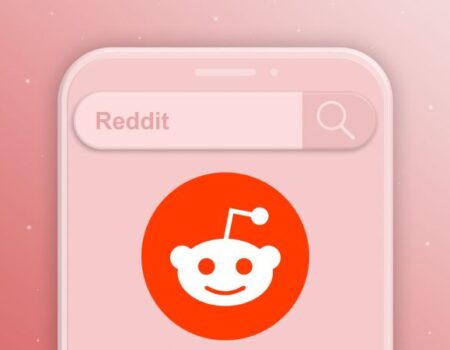Integrated Media Planning: A Guide to Incorporating It Into Your Marketing Strategy!
Integrated media combines various media formats and channels to deliver content to different audience segments. This mix can include traditional media like print and billboards, digital, broadcast, or even product packaging. Integrating media ensures businesses reach a wider audience across multiple touchpoints, enhancing engagement and visibility. In this post, we’ll explore how leveraging integrated media can drive stronger connections and better results for your business.
Integrated Media and Types
Integrated media refers to the strategic use of various media formats and channels to reach and engage different audience segments. The key to successful integrated media is consistency and coordination across all touchpoints. Here are the main types of integrated media:
- Social media content.
- Events
- Partnerships
- Paid media
- Blog articles
- Print ads
- Billboards
- Radio/TV commercials
- Press coverage
- Search engine marketing
- Social ads
- Your website
Integrated media can be categorized into several types, including digital, broadcast, print, and outdoor. These can be divided into three key buckets for planning: paid, earned, and owned media.
Here’s a more detailed explanation of each media type:
- Paid Media: This involves any marketing that requires financial investment, such as display ads, sponsored content, and paid social media posts. It boosts brand visibility, targets specific audiences, and drives traffic or conversions. The key advantage is controlling where and when your message appears.
- Earned Media: This is the coverage you gain through word-of-mouth, PR, or external content that highlights your brand without direct payment. Examples include media articles, reviews, and mentions of influencers. While you can’t control the message, earned media is often seen as more credible and can significantly impact trust and awareness.
- Owned Media: These are channels that you own and manage, like your website, blog, and social media profiles. You have complete control over the content and can craft your message according to your brand’s voice. It’s an effective way to maintain direct relationships with your audience and manage long-term brand presence.
Each type serves different roles in a marketing strategy, with paid media driving immediate attention, earned media building trust, and owned media providing sustained engagement.
What is an Integrated Media Planner?
An integrated media planner makes decisions based on buyer insights, competitor analysis, and market feedback. They select the most effective media channels (paid, owned, earned) and strategically determine content timing and frequency. For example, posting Instagram stories during evening hours or planning radio ads for morning commuters. The planner’s role is crucial in organizing when and how often content appears, ensuring it aligns with audience habits and maximizes impact, making timing and consistency key aspects of their responsibilities.
Why is Integrated Media So Effective?
Integrated media thrives because it diversifies the channels used to reach audiences, avoiding overreliance on just one method. Combining various platforms ensures broader reach and enhances the chances of engaging with potential customers at different touchpoints. This strategy also taps into the power of repetition—consumers are likelier to take action through multiple exposures across various channels. Studies suggest that customers need anywhere from one to fifty touches before purchasing. However, creating such a seamless, multi-touch experience is complex and requires careful planning and execution.
Detailed Explanation of the Challenges of Integrated Media Planning!
Overcoming these challenges is key to leveraging integrated media effectively:
- Cost: Juggling different channels—paid, earned, and owned—often requires significant investment. For example, hiring experts, creative teams, and running paid ads can be pricey, making it a tough strategy for businesses with limited budgets.
- Attribution: With multiple media channels involved, it’s challenging to pinpoint which one directly led to a conversion. Without clear data on each medium’s contribution, you risk misjudging the effectiveness of your efforts.
- Resourcing: Managing various media channels demands time, effort, and attention. Running numerous campaigns across different platforms requires a substantial commitment from teams, which can stretch resources thin, especially for smaller teams.
Crafting A Perfect Media Strategy!
Set Clear and Measurable Campaign Objectives
Begin by establishing the specific goals for your media campaign. Whether you’re aiming to increase brand awareness, drive traffic, or boost sales, having defined objectives helps you measure success. Ensure these goals are SMART—Specific, Measurable, Achievable, Relevant, and Time-bound—to provide direction and clarity. This step aligns the campaign’s execution and outcome expectations, ensuring that all efforts contribute to achieving your overall business objectives.
Understand Your Audience and Define Target Market
Defining your target audience is vital. Understanding their demographics, behaviors, and preferences enables you to tailor your messaging for maximum impact. Through market segmentation, you can craft specific messages that resonate with different audience groups. By identifying where your audience spends their time—whether on social media, websites, or specific content types—you can optimize your media strategy and choose platforms that offer the best reach and engagement.
Select the Right Media Channels
Choosing the appropriate media outlets is crucial for the success of your campaign. Based on your target market, you should select the channels that will most effectively reach them. These could include a combination of digital platforms (like social media, search engines, email) and traditional outlets (such as TV, radio, or print). The key is understanding where your audience spends their time and ensuring your media mix aligns with their habits.
Create Compelling and Relevant Content
Once the media channels are identified, creating the content is time. This involves developing engaging and relevant messaging tailored to the audience’s interests and the media channels’ specific format. The content should speak to the campaign’s goals and align with the audience’s needs, whether it’s visual ads for social media, blog articles, videos, or email newsletters. High-quality, creative content is crucial in catching attention and maintaining engagement.
Launch the Campaign Effectively
The execution of your campaign is critical. After all the preparation, launching it involves ensuring that your messaging reaches the target audience at the right time. Scheduling and timing are important factors, such as posting during peak social media hours or aligning TV ads with key audience viewing times. The launch should be monitored closely for performance and quick adjustments should any issues arise. Effective deployment helps to ensure that all efforts come together seamlessly.
Analyze Campaign Performance and Optimize
After the campaign is live, measuring its success is crucial. Use analytics tools to track key performance indicators (KPIs) such as engagement rates, click-through rates, sales conversions, and overall ROI. Comparing actual results to your initial goals will help you evaluate the strategy’s effectiveness. Based on insights gained from the data, you can make informed adjustments, improve future campaigns, and refine your approach for better results next time.
Partner with our Digital Marketing Agency
Ask Engage Coders to create a comprehensive and inclusive digital marketing plan that takes your business to new heights.
Contact Us
Conclusion
In conclusion, integrated media planning is a dynamic and strategic approach that combines multiple media channels to create a cohesive and effective marketing campaign. By focusing on clear goals, understanding your target audience, selecting the right platforms, crafting engaging content, launching with precision, and continually analyzing performance, businesses can optimize their media strategy for maximum impact. Though challenging, integrated media planning can significantly enhance brand visibility, engagement, and success.
Embrace a multifaceted approach to connect with your audience across various touchpoints and achieve your marketing objectives.






